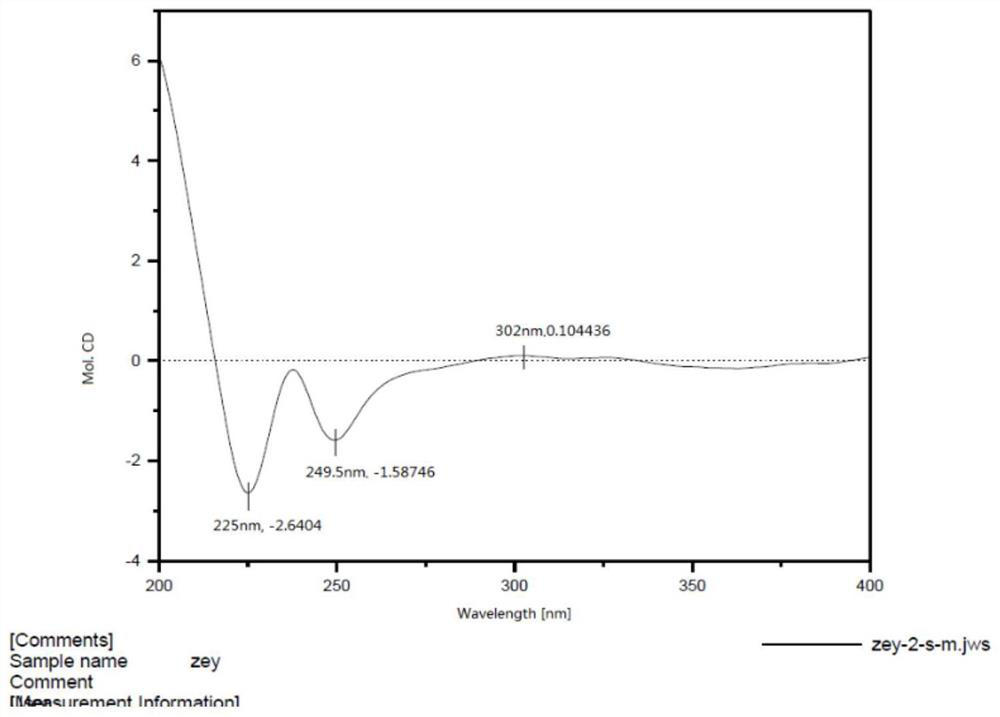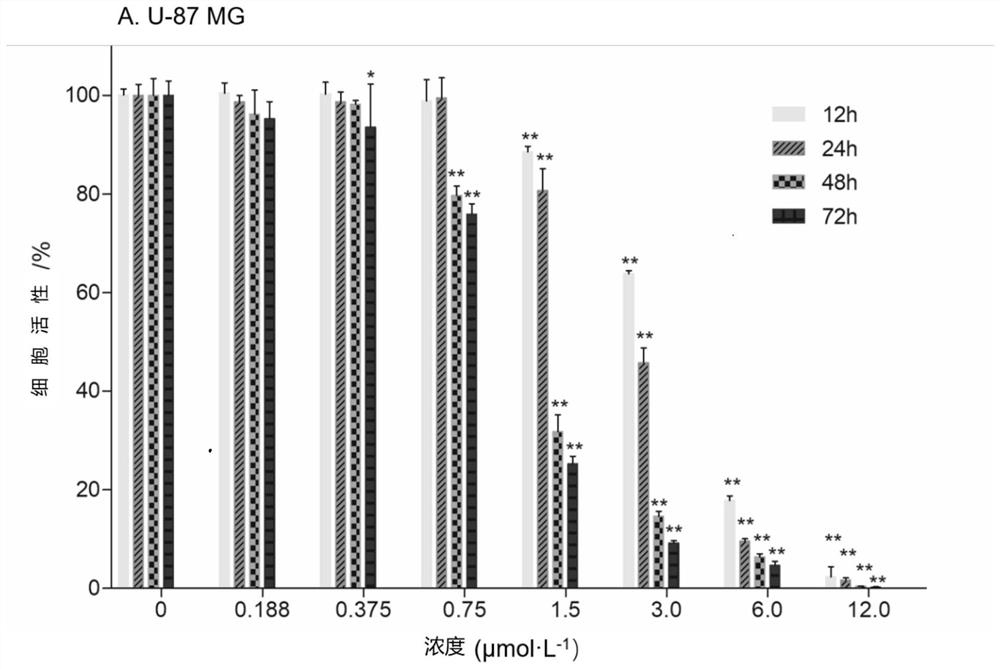Zeylenone and derivative thereof, and preparation method and application thereof
A technology of sanhoprolene and derivatives, which is applied in the field of medicinal chemistry, can solve the problems of unsolved sources of sanhoprolone and inability to meet a large amount of demand for compounds, and achieves the effects of efficient preparation, high sensitivity and good selectivity.
- Summary
- Abstract
- Description
- Claims
- Application Information
AI Technical Summary
Problems solved by technology
Method used
Image
Examples
preparation example Construction
[0047] The present invention also provides a kind of preparation method of sanspotenone and derivatives thereof as described above, comprising:
[0048] providing a compound of formula (V);
[0049]
[0050] The compound with the structure of formula (V) is sequentially subjected to acetone acetal protection of cis-dihydroxyl group, benzoylation protection reaction and deprotection reaction with dilute hydrochloric acid to obtain the compound with structure of formula (I);
[0051] or
[0052] The compound with the structure of formula (V) is sequentially subjected to acetone acetal protection and benzoylation protection reactions of the cis-dihydroxyl group to obtain the compound with the structure of formula (II).
[0053] The preparation method of the compound of formula (V) structure provided by the present invention can specifically be:
[0054]performing an asymmetric dihydroxylation reaction on the first reactant with an asymmetric dihydroxylating agent to obtain a...
Embodiment 1
[0095] The synthesis of embodiment 1 compound QA2-1
[0096]Quinic acid (5.5g, 23.6mmol) was dissolved in 100mL of anhydrous methanol, and 2,3-butanedione (4.53mL, 86mmol) and trimethyl orthoformate (12.89mL, 118mmol) were added under stirring, ( ±) camphorsulfonic acid (4.53mL, 86mmol), reflux at 70°C for 10h. Add 5 mL of triethylamine to quench the reaction, and concentrate to obtain a crude product. Purified by silica gel column chromatography (dichloromethane-methanol, 30:1-20:1) to obtain compound QA2-1 (6.69 g), a white powder, with a yield of 90%.
[0097] 1 HNMR (600MHz, MeOD) δ4.31 (ddd, J = 12.0, 10.2, 4.5Hz, 1H), 4.12-4.10 (m, 1H), 3.77 (s, 3H), 3.55 (dd, J = 10.2, 2.9Hz ,1H),3.28(s,3H),3.28(s,3H),2.08-2.04(m,3H),1.87(t,J=12.5Hz,1H),1.34(s,3H),1.29(s, 3H). 13 CNMR (150MHz, MeOD) δ173.97(s), 99.58(s), 99.17(s), 75.34(s), 72.62(s), 68.15(s), 62.11(s), 51.23(s), 46.38( s),37.78(s),36.98(s),16.35(s),16.25(s).HRMS(ESI):m / z calcd.C 13 h 21 o 7 [M+H] + :289.1287,...
Embodiment 2
[0098] The synthesis of embodiment 2 compound QA2-2 and QA2-3
[0099] Compound QA2-1 (6.69g, 21.2mmol) was dissolved in 100mL of anhydrous methanol, sodium borohydride (1.9g, 50mmol) was added in batches under stirring, and the reaction was vigorously stirred at 0°C for 2h. TLC detected the completion of the reaction, added 5 mL of water to quench, added 5 mL of dilute hydrochloric acid to stand still, and concentrated to obtain a crude product. Purification by silica gel column chromatography (dichloromethane-methanol, 10:1) gave crude compound QA2-2 (5.4 g), a white powder, with a yield of 87%, which was directly used in the next step without purification.
[0100] In the reaction flask containing the crude product of QA2-2 (5.4g, 18.44mmol), add phosphate buffer (0.2M, ph=7), and add sodium periodate in batches under ice cooling. React at room temperature, TLC detects that the reaction is complete, add 100 mL×3 dichloromethane for extraction, and concentrate to obtain a c...
PUM
 Login to View More
Login to View More Abstract
Description
Claims
Application Information
 Login to View More
Login to View More - R&D
- Intellectual Property
- Life Sciences
- Materials
- Tech Scout
- Unparalleled Data Quality
- Higher Quality Content
- 60% Fewer Hallucinations
Browse by: Latest US Patents, China's latest patents, Technical Efficacy Thesaurus, Application Domain, Technology Topic, Popular Technical Reports.
© 2025 PatSnap. All rights reserved.Legal|Privacy policy|Modern Slavery Act Transparency Statement|Sitemap|About US| Contact US: help@patsnap.com



